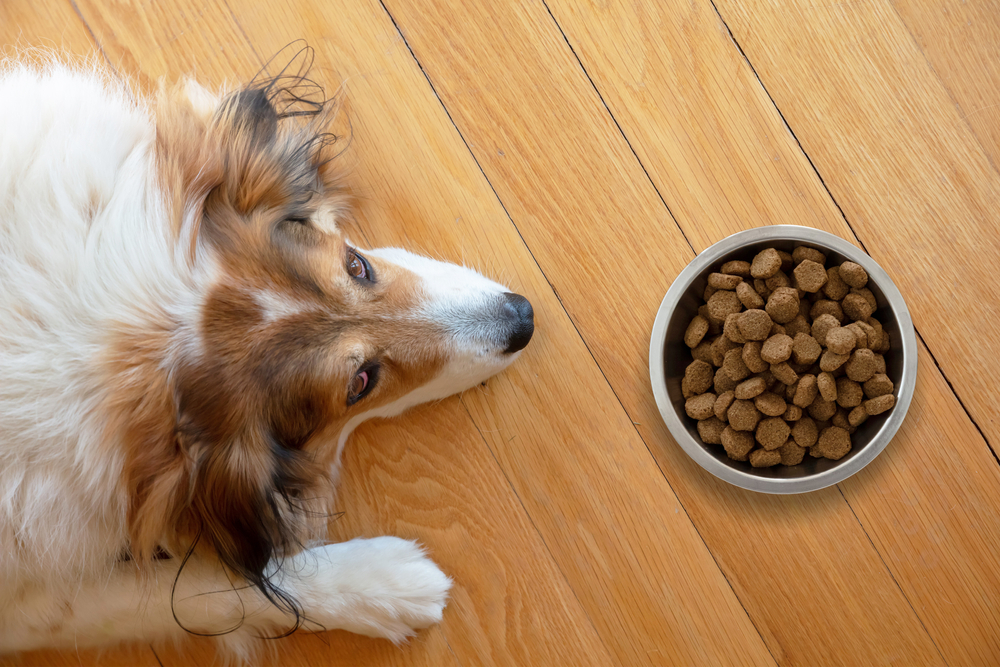Listen up, pet parents: Your fur baby might be trying to send out some pet distress signs!
As loving pet parents to our four-legged fur balls, we only want the best for them. And the way to accomplish that is by keeping them happy, healthy, and lively. But, like humans, pets might also need help throughout their lifetime.
So, in today’s article, I’d like to focus on 5 critical pet distress signs that show that your fluff ball is begging for help. The truth is that because of the language barrier between our cats and dogs, it’s hard to know if they might need our help.
Well? How do we communicate with them if something is off? Fortunately, there are tell-tale signs we can observe if our beloved pet is not okay and what we should do about it.

Pet distress sign: Eating and drinking differently
An unusual change in activity is one of the first pet distress signs that your pup isn’t feeling well and might need help. This is especially true if those activities are essential to their survival. If your pup is suddenly ravenous, has lost its appetite, or is drinking way more or less water than usual, it’s time for a check-up with their vet.
Occasionally, these warning signs can be subtle. But red flags can include not being as excited about mealtime, leaving a bowl full of food or water, or scouring the house for new food and water sources, like checking out your pantry for a snack or going to the toilet for a drink.
Here’s the good news, though: Your pet might have a harmless bug passing through their system, or maybe they’ve been running around more than usual, and their thirst or appetite has increased. On the other hand, the bad news is that it could also be a sign of something more severe, like diabetes, Cushing’s disease, kidney disease, or liver disease.
If this behavior lasts more than 24 hours or is accompanied by other extreme symptoms, like diarrhea, vomiting, or whimpering, it’s time to visit the vet.
Pet distress sign: Sudden immobility issues
Besides dealing with allergies, canines are sensitive to developing Lyme Disease from tick bites. This disease is common in dogs and causes swelling and inflammation in their joints, making running, walking, or moving around awkward. Other symptoms usually include skipping meals, fever, and sometimes lameness.
The pet distress signs for Lyme disease are subtle. But if you don’t catch them early on, it can result in a life-threatening kidney failure in pups, especially in Golden retrievers and Labradors.
So it’s critical to contact your vet as soon as possible if you suspect that your dog could have Lyme disease or any other tick-borne illness so they get a chance to diagnose and treat it asap. With most cases of Lyme disease, canines respond well to antibiotics.
Still, minimizing the risk entirely is always safer by using year-round, fast-acting tick, flea, and heartworm preventative meds. Lyme disease is most likely to appear in zones where ticks live. According to the CDC, the types of ticks most likely to spread this disease live in the Upper Midwest and Northeast parts of the US.

Pet distress sign: Whimpering, trembling, and whining
To translate this pet distress sign, you should put your detective hat on because the reason for it is highly dependent on your pet and the situation.
One common reason for this demeanor is anxiety, which could be caused by a variety of things, including loud noises (from fireworks, storms, or cars), separation from you, or adapting to new people in your home. Once you figure out the root cause, you can determine the best way to calm your furry pal.
For instance, soundproofing your windows or placing your pet in a contained interior space can help with noise-related anxiety. If they have separation anxiety, being aware of your own behavior and taking a slow and steady approach are your best bets.
Animals tend to pick up signals easily. For example, you pick up your keys or put your shoes on. Try desensitizing them by randomly giving these signals and leaving for quick trips. You can also offer treats when you leave. In more severe cases, anti-anxiety medications from your vet can also help. Top it off with lots of play time and exercise, and your beloved pet will be OK.
Pet distress sign: Destroying your things
Even though separation anxiety is one reason your pup might munch on the baseboards, rip up the couch, or gnaw on your favorite shoes, this behavior is sometimes due to boredom or not having access to chew toys. So, what’s the fastest way to stop this behavior?
Ensure your pup gets enough mental stimulation and physical exercise daily. Spend more time playing, walking, and interacting with them, replace the chewed-up possession with a dog toy during the act, and use bad-tasting but pet-friendly repellents on things they tend to go after.
Dog puzzles can help curb your beloved pet’s boredom, too. If they continue on this rampage of destruction, professional help is also an option. While it can be pricey to treat, the problem is just that: treatable. And in certain cases, it can even covered by pet insurance.
Sadly, many owners surrender their dogs to shelters, where they could be euthanized because they don’t think the problem is treatable. So remember that there’s always help.
… Psst, If you’re looking for an interactive toy for your furry pal but don’t know what to get, here’s my pup’s favorite toy on Amazon: KADTC Dog Chess Puzzle Toy for Brain Stimulation

Pet distress sign: “Accidents” around the house
Your potty-trained pup isn’t “bad” when he has an accident in the house. This is another pet distress sign that he needs help. Canines get used to a routine, kind of like babies. They tend to wake up and sleep around the same time each day, and they eat and go out to do their business at the same time each day.
If your pooch starts defecating or urinating inside the house when you’ve never had these issues with them, that’s a sign that something is off. Having to go outside more or less than usual is another tell-tale sign.
Changes in your dog’s bathroom regimen can mean various things, ranging from a urinary tract infection to a minor stomach bug, or it could indicate a more serious condition. It could also mean that your pup needs to use the bathroom more frequently than you think they do, which is especially common if owners are away from home all day long.
Though dealing with accidents in the house can be frustrating, outrage and discipline won’t solve the issue. In fact, it can even make things worse. In most cases, this behavior is a cry for help. If the change lasts more than 24 hours and more walks during the day don’t help, it’s time to visit your vet for a diagnosis and treatment.
Has your furry pal ever displayed any of these pet distress signs? If so, how did you handle it? Please feel free to share your thoughts with us in the comments section below.
Meanwhile, if you found this article helpful, you’ll also like: These 9 Adorable but Stubborn Dog Breeds Are IMPOSSIBLE to Train













2 Responses